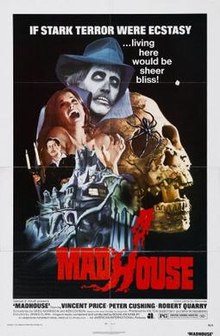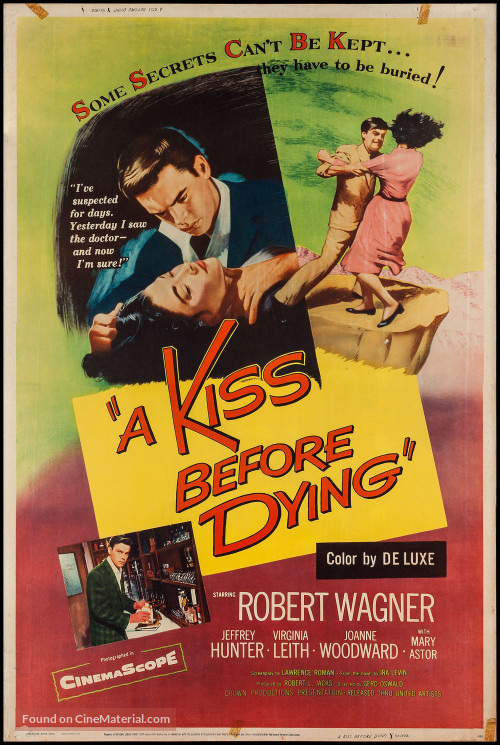In this 1974 film, Vincent Price plays Paul Toombes, a talented actor who, despite his formal training and his distinguished background, is best-known for giving hammy performances in low-budget horror films.
Hmmm …. do you think Vincent Price possibly could have related to this character? I mean, one thing that people often forget is that Vincent Price did not start his career in horror movies. Price started his career as a romantic lead and then he eventually moved into character parts. He was tested and apparently quite seriously considered for the role of Ashely Wilkes in Gone With The Wind. Price was also considered for the role of Mr. Potter in It’s A Wonderful Life and rumor has it that he would have gotten the role of Addison DeWitt if George Sanders had turned down All About Eve. Before he became an icon of horror, Price had roles in big-budget Oscar nominees like The Song of Bernadette and Wilson. He even appeared in the classic film noir, Laura.
It wasn’t until the 50s that Price started to regularly appear in horror films and soon, that was what he was best known for. Price’s naturally theatrical style made him a perfect fit for the genre and it won him a legion of adoring fans. The same can be said of Paul Toombes.
Paul Toombes is best-known for playing the role of Dr. Death. He appeared in five Dr. Death films, the majority of which were written by his friend, Herbert Flay (Peter Cushing). Unfortunately, the murder of his fiancée put a temporary end to Toombes’s acting career. Even though Toombes was acquitted of the crime, everyone seems to assume that he did it. Apparently, having a nickname like Dr. Death doesn’t do much to convince people of your benevolence.
However, Toombes finally has a chance to rebuild his career! The BBC wants to produce a Dr. Death TV series and they want Toombes to once again play his most famous role. The only problem? People involved with the production are getting murdered, one-by-one. Is Dr. Death responsible or is he being set up?
Madhouse is kind of an early slasher film, though, with its gloved killer and its whodunit plot, it has more in common with an Italian giallo than an installment of Friday the 13th. The deaths are bloody but not too bloody. In fact, for a film that’s full of murder and betrayal, Madhouse is surprisingly good natured. The main appeal of the film, of course, is to see Vincent Price and Peter Cushing acting opposite of each other. Though they were both known for appearing in horror films, Price and Cushing were two very different actors and each brought his own individual approach to Madhouse. Price is his usual flamboyant self while Cushing is considerably more reserved and the contrast of their styles actually creates an interesting dynamic between Toombes and Flay.
Madhouse is also full of footage from previous films that Vincent Price had made for AIP. (Of course, these movies are presented as being Dr. Death films.) Basil Rathbone and Boris Karloff both appear in archival footage, acting opposite Price. It’s nice to see them, even if neither one of them was actually alive when Madhouse was filmed. Paul Toombes actually gets a scene where he praises Bail Rathbone’s performance and one gets the feeling that the sentiments were being expresses as much by Price as by the character he was playing.
Madhouse is okay. The plot’s not particularly challenging and the tone tends to go all over the place, as if the film can’t decide whether it wants to be a horror movie or a Hollywood satire. However, the film works whenever Vincent Price is on-screen, which is often. Price is just fun to watch, especially when he’s teamed up with an old pro like Peter Cushing. For fans of Price and Cushing, Madhouse is an entertaining chance to watch two icons of horror go at it.











